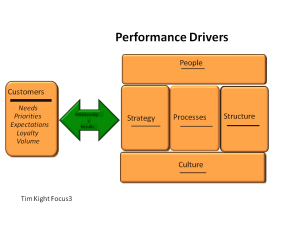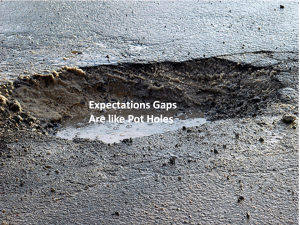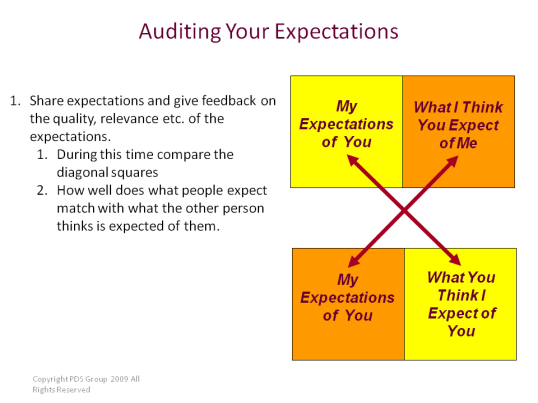Series Introduction
This is the eighth in the series of highlighting contributions from 1072 Business Leaders and Consultants from 80 countries in 19 Industry Sectors detailed in our book Focusing Change to Win. Each blog gives some of the key findings and a sample of useful tips. In this blog we are focusing on How Can You Lead to Thrive? Here are the other book sections we are highlighting:
- Why is this book important?
- How is your “What” connected to your “Why”?
- Why do people resist change?
- Why bother measuring change?
- How can implementing change gain competitive advantage?
- Is your organization thriving or surviving?
- How effectively are you communicating change?
- How can you lead to thrive?
8. How Can You Lead to Thrive?
Clearly from this survey, leadership skills that focus change to win are at a premium. Today, change is the norm. It is neither random nor regular but hovers somewhere between. How these interrelationships arise and how they challenge organizations is not well understood (IBM & KMPG Surveys endorse this)
Why should leaders focus on their organization’s essence?
An organization’s essence is the amalgam of mission, vision, values, intent and ethics. These components should be the focus of aligning and realigning people rather than delivering the corporate directives after a strategic planning retreat. Sustaining an organization’s essence is a dynamic that requires everyone’s engagement to define and redefine under changing situations.
It’s only by leaders “inter-reacting” that they can develop people’s shared clarity about the organization’s essence – “what we stand for!” From shared clarity comes confidence, from confidence comes cohesion and from cohesion comes the freedom to decide and act. That’s how organizations will stay on track today. Many people making many decisions true to their organization’s essence.
It’s also expected that some employees (including some executives) will not “buy into” an organization’s Essence once it is clearly defined. Leaders should then be ready for those employees and managers to transition out of the organization. This will benefit them and organizational cohesion
What are the dangers of using technology to increase control?
Technology increases the illusion of greater control which can feed a leader’s “Control Addiction”. More measurement equals more control. But measuring what is easy to measure can have the very opposite effect. The problem is that most of what is easy to measure has already occurred. What is difficult is dealing with the factors that are difficult to measure and with forecasting what is likely to happen down the road. We can’t spend more time looking through the “rear view mirror” when we have a winding road ahead of us. Technology’s cheapness and speed feeds this addiction with the past and “looking in the rear view mirror” by access to ever more data and information at the cost of acquiring knowledge and wisdom.
This condition is worsened by technologists clinging to largely sequential design and deployment processes which are not fully user or client inclusive, e.g. “Waterfall Process”. Contrast this with agile processes which are fully supported by our contributors. See the link to comparing the Waterfall Process with Agile Methodologies.
Why do we have difficulty developing leaders that can thrive in today’s conditions?
Today’s conditions are not good proving grounds for the leaders we need. More of doing more with less, multi-tasking and the growing doubt that we may be doing the wrong things means that decision-making, and expectations are now more compressed. Consequently, entrenched expediency leads us into solving one problem so quickly that we find we have now created five more problems. We are so busy trying to solve problems there’s no time for “Where the hell are we going?” These conditions are not good for selecting or developing leaders who can work well under fluid and complex conditions.
How do we develop leaders that can thrive?
The tension between what Leaders want to achieve and their current culture prevents traditional leadership training from making a significant impact. For example, many leaders’ previous training has left them feeling that they could do a better job doing it themselves. Of course, too often this has not happened together with little sign that they have addressed their own or their junior leaders’ performance issues. The consequence is that leading up to a change they lack confidence and skills to handle the natural uncertainty that change creates. Consequently, they default to avoidance and expediency and as a result staff resistance rises morale suffers.
The conclusion is that Leaders need to develop a better framework to assess their competence to lead people, make the next and later changes more effectively.
In this section we outline how leaders can be developed to increase their chances of achieving both measurable short- and longer term results than traditional leadership training. It is based on approaches:
- Aligning People – Getting people on the Same Page
- Action Learning – Solving Difficult Problems while developing leaders’ skills
A Final Thought
Our position is that it’s only by energizing people and harnessing technologies better than anyone else that organizations can survive and thrive. Genuinely aligned, empowered and collaborative people will outperform the competition every time. A leader’s role is to create successful change that fulfills people and avoids human casualties. Leaders need to create working relationships that are rewarding not just superficially productive.
Action Points 7: Leading to Thrive
A Leader’s greatest impact is when they motivate their followers to action by appealing to their shared sense of their organization’s essence. Use these questions to rate your leaders’ abilities:
- To what extent do your leaders focused on developing rewarding not just working relationships?
- How reliant are your leaders on “command and control”?
- How well do they really engage those they lead?
- How well do they foster a culture of collaboration? Consider both internally and externally.
Leading to the Essence
Do your people know what your organization stands for? Specifically:
- How well understood is the organization’s essence? (mission, values, intent and ethics)
- How well aligned are my people with the Organization’s Essence and where it’s headed?
- To what extent do leaders use the essence to guide and coach their people?
Developing Leaders
- To what extent are you distributing and empowering leaders at all levels.
- What evidence do you see of true “inter-reaction” where success and failure are openly discussed?
- To what extent do they then take lessons learned and use them to repeat success and avoid failure.
- How well do they use processes to help people stand back, objectify problems and make people’s thought processes transparent?
- To what extent does the urgent drive out the important and mask how things accumulate, misalign and make each subsequent more difficult?
Problem Solving
- How often do your leaders try to solve complex problems with processes geared to “benign or simple problems”?
- How often do leaders face complex or wicked problems?
Leading Learning
- What expectations do we have of people to develop shared knowledge from similar situations?
- How much effort have you put into helping people express being puzzled or misunderstood?
- How well do they lead people on tackling problems and solutions by sharing understandings, resolving differences and producing agreed courses of action?
- How well have leaders, especially senior leaders, consistently expressed their expectations of learning to all levels across the organization?
![]() To Buy a Copy of Focusing Change To Win:
To Buy a Copy of Focusing Change To Win: 
To Buy a Copy of Focusing Change To Win:















 havior. This long and tedious process considered many potential categories. The researchers finally concluded that a practical list of categories could be produced if the selected behaviors met 5 basics criteria. They were:
havior. This long and tedious process considered many potential categories. The researchers finally concluded that a practical list of categories could be produced if the selected behaviors met 5 basics criteria. They were:
 Process behaviors entail the obstruction of or opening up of the discussion process to group members.
Process behaviors entail the obstruction of or opening up of the discussion process to group members. 











